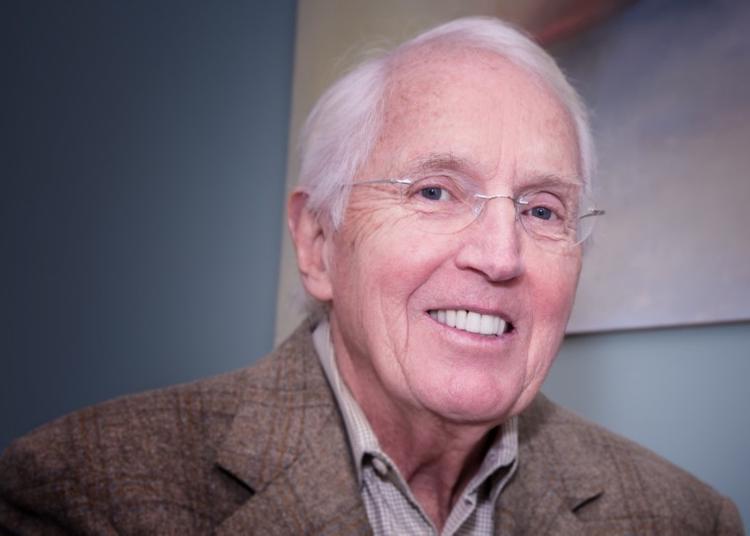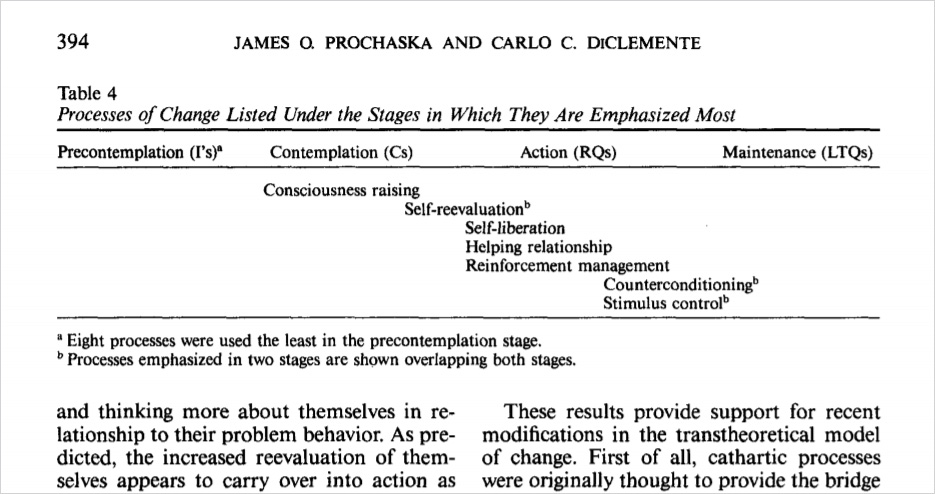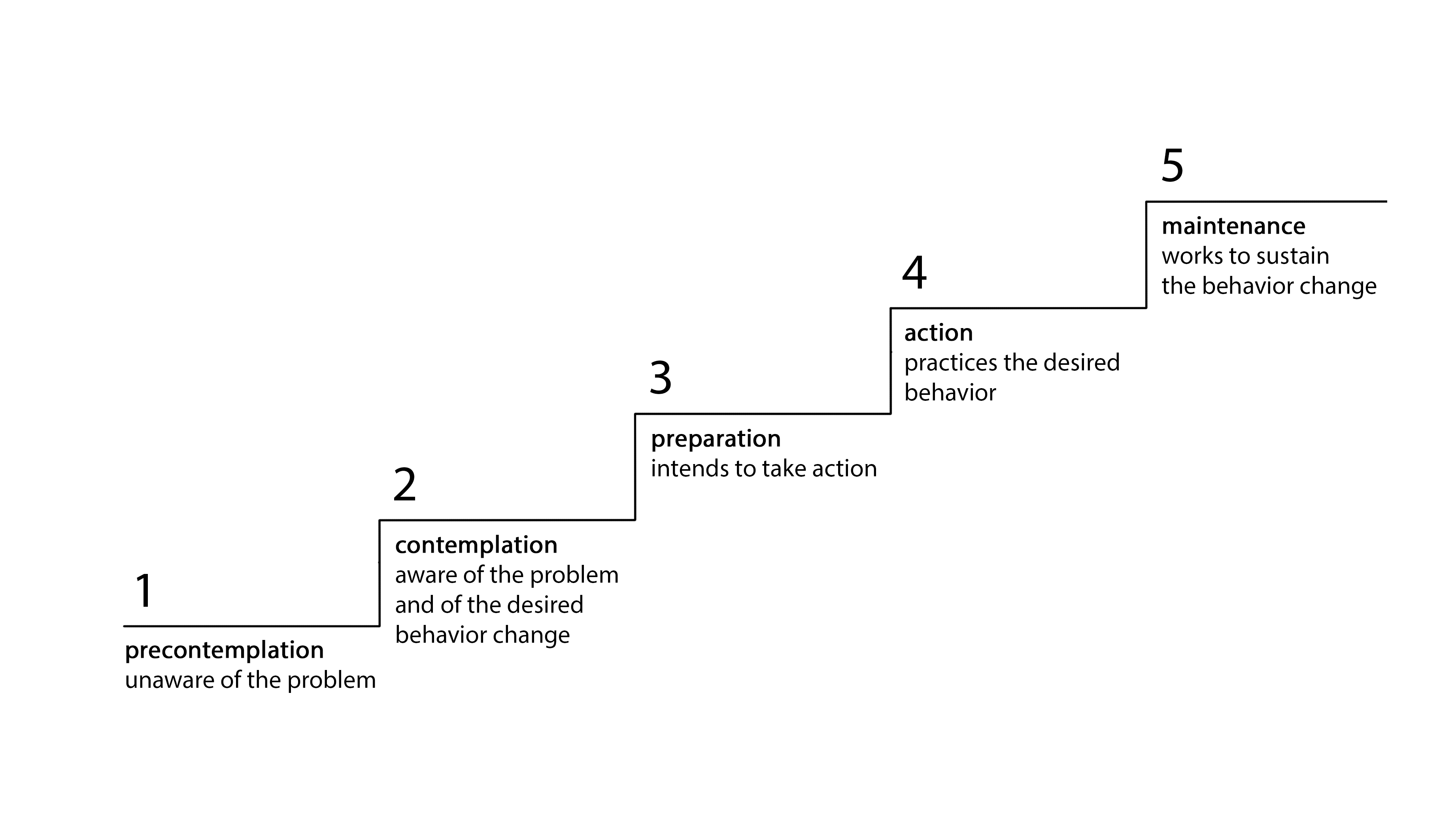A modern framework to become sober and healty in less time than ever.

In the late 1970s, they began to study the experience of people who tried to end their bad habits.
And they discovered that those who succeeded did it by the same scenario. Scientists called this scheme a transteoretical model of behavioral change (TTM).
And it proved to be effective, now it is used worldwide to solve serious psychological problems: rehabilitation of addicts, therapy of depression, anxiety, panic attacks, interpersonal problems and others.
The question of behavioral changes interested Prochaska in his youth, it was because of him he chose the profession of psychotherapist. And there was a personal reason for that.
"I could not help one person to cope with the depression and alcoholism that killed him. Since this person did not trust psychotherapy and denied the problem itself, all difficulties lay on the shoulders of his loved ones. And although we tried to help, no methods worked. This man was my father. After his death, when I was in my first year of college, I got seriously involved in psychology hoping to understand what happened. I was wondering if there was any way to help people like my father," he says in the book "Changing for Good".
Starting to study as a psychotherapist, James was surprised at how many different schools, theories and approaches exist. In the 50's there were already about 36 separate psychotherapeutic directions (nowadays their number has already exceeded 400). All studies at the university consisted of studying the differences between approaches. James, on the other hand, was wondering if these schools had something in common?
It turned out that they did. Although different areas of psychotherapy explained the causes of a patient's problems differently, almost all came together in terms of mechanisms of change.
Prochaska highlighted the most effective methods that were used by the leading psychotherapy schools at that time (he wrote a book about this in the book Psychotherapy Systems). For example, he borrowed "awareness raising" in psychoanalysis, and behavioral change through reward from radical behaviouralists.
According to the TTM, each stage of behavior change has corresponding processes of change. For example Conscious-raising, self-reevaluation, dramatic relief, and social liberation are the processes of change at the Contemplation stage. Each Sober One task involves one of them.

Prochaska and his PhD student Carlo Carlo DiClemente started with a little research among smokers who tried to quit. Their goal was to find out which of the 9 methods they used and how often.
"We interviewed 200 people who tried to quit smoking, mostly those who did not use professional help. The survey included poor farmers living in trailers in Rhode Island fields, and businessmen working in offices in the city center. I remember especially well one middle-aged lady.
I asked her how often she used this or that technique of change. She replied, "It depends on what period you're asking about. Sometimes I used some technique more often than others, and sometimes I didn't use it at all."
This helped Prochaska to move forward with the idea that the changes are gradual, in several stages. And it seems that for each stage, you need a different set of methods. But what kind of methods?
And so in the late 70's Prochaska with colleagues began a large-scale study among smokers who tried to quit. Now they were interested in whether there was a connection between the stage of change and the methods used by people. The research involved 1000 people from different cities and states, different sexes, ages, and different social level.
But when scientists moved from interviews to analyzing the data obtained, the results did not add up to a pattern.
"When we finally entered all the information into the main computer, the result was a chaotic set of numbers.
My data analyst has announced that the study is meaningless that my belief that it is possible to use the stages of change to combine powerful techniques to change competing psychotherapy systems is not supported by numbers.
When I was completely desperate, it suddenly hit me. One day at about 1 a.m. I decided to remove the group of relapsed people from the data collection, because the relapse was not part of our model of stages. Probably, it broke our results in the same way as it frustrates people's plans to change. As soon as I removed these data, the picture was formed.
Thus, the authors of TTM found that all those who were able to successfully overcome the harmful habit, consistently passed through five stages. And at each stage, they used a strictly defined set of methods of change. Those who used the methods chaotically, usually broke down and went into relapse. As a result, scientists formulated a simple and universal scheme of 5 stages and published the first results in 1983.

Over the next 40 years, they continued to study how people with different behavioral problems engage in self-change. These studies also confirmed that TTM works, with a total of 150,000 participants over the years.

The idea of step-by-step changes became the basis of the Sober One. We have supplemented the strict universal scheme of TTM with effective methods from other psychotherapeutic approaches.
Altogether they are able to solve the problems of addictive behavior. The effectiveness of every method is confirmed by clinical studies and years of practice.
